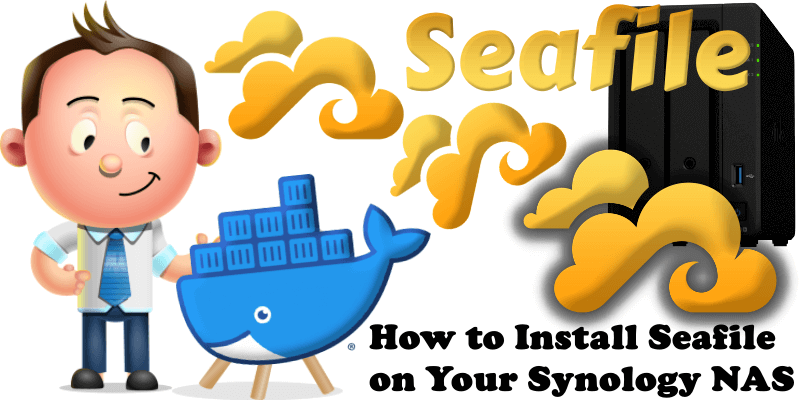
Seafile is an open source file Sync and Share solution designed for high reliability, performance and productivity. Sync, share and collaborate across devices and teams. Seafile is an alternative for Dropbox and Synology Drive. In this step by step guide I will show you how to install Seafile on your Synology NAS using Docker and Portainer.
This guide works perfectly with the latest Seafile 11.0.9 release.
STEP 1
Please Support My work by Making a Donation.
STEP 2
Install Portainer using my step by step guide. If you already have Portainer installed on your Synology NAS, skip this STEP. Attention: Make sure you have installed the latest Portainer version.
STEP 3
Make sure you have a synology.me Wildcard Certificate. Follow my guide to get a Wildcard Certificate. If you already have a synology.me Wildcard certificate, skip this STEP.
STEP 4
Go to Control Panel / Login Portal / Advanced Tab / click Reverse Proxy. Follow the instructions in the image below.
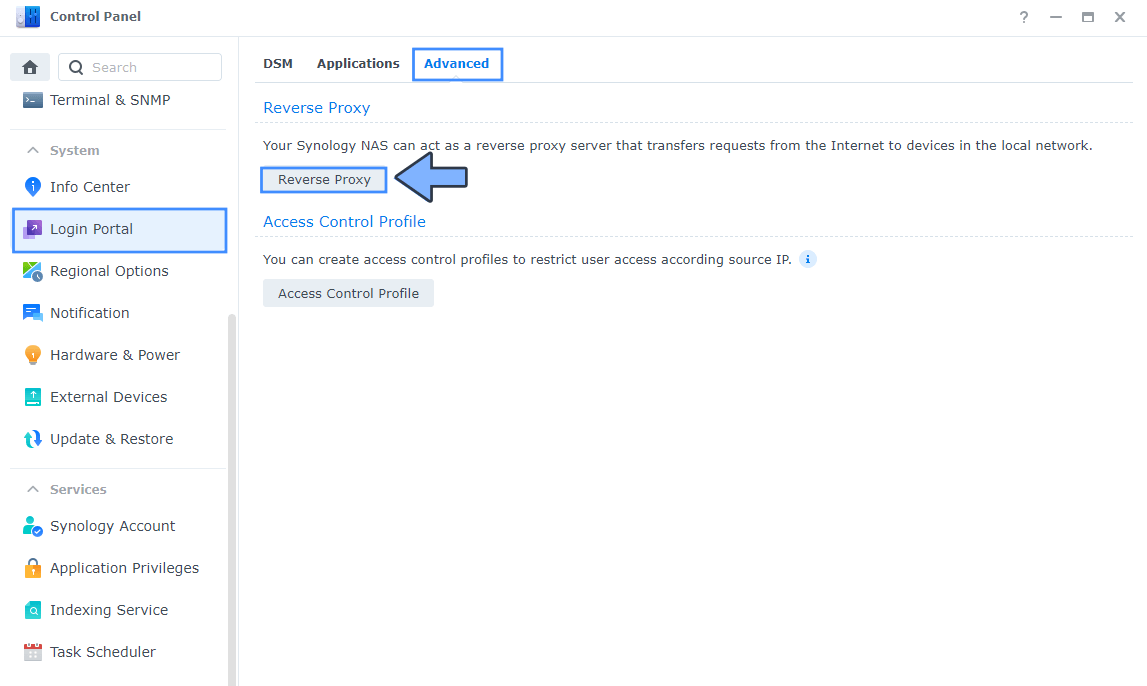
STEP 5
Now click the “Create” button. Follow the instructions in the image below.
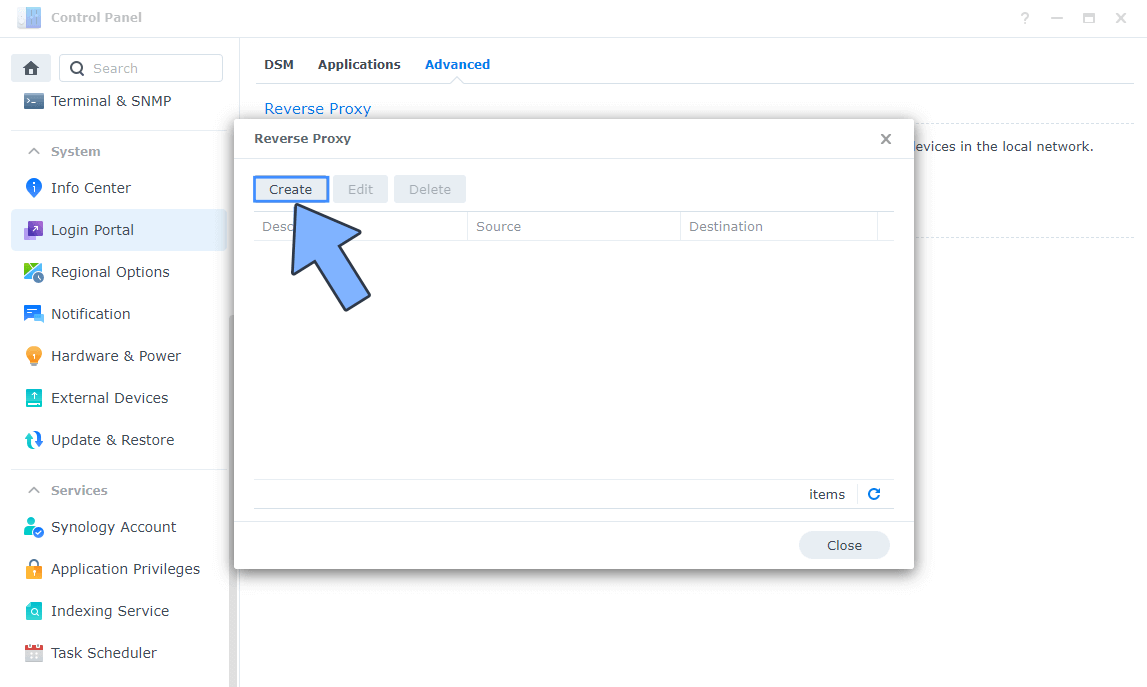
STEP 6
After you click the Create button, the window below will open. Follow the instructions in the image below.
On the General area, set the Reverse Proxy Name description: type in Seafile. After that, add the following instructions:
Source:
Protocol: HTTPS
Hostname: seafile.yourname.synology.me
Port: 443
Check Enable HSTS
Destination:
Protocol: HTTP
Hostname: localhost
Port: 8611
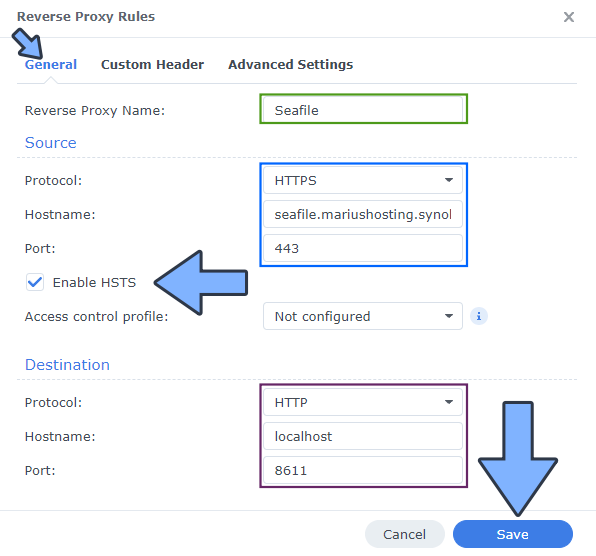
STEP 7
On the Reverse Proxy Rules click the Custom Header tab. Click Create and then, from the drop-down menu, click WebSocket. After you click on WebSocket, two Header Names and two Values will be automatically added. Click Save. Follow the instructions in the image below.

STEP 8
Go to Control Panel / Network / Connectivity tab/ Check Enable HTTP/2 then click Apply. Follow the instructions in the image below.
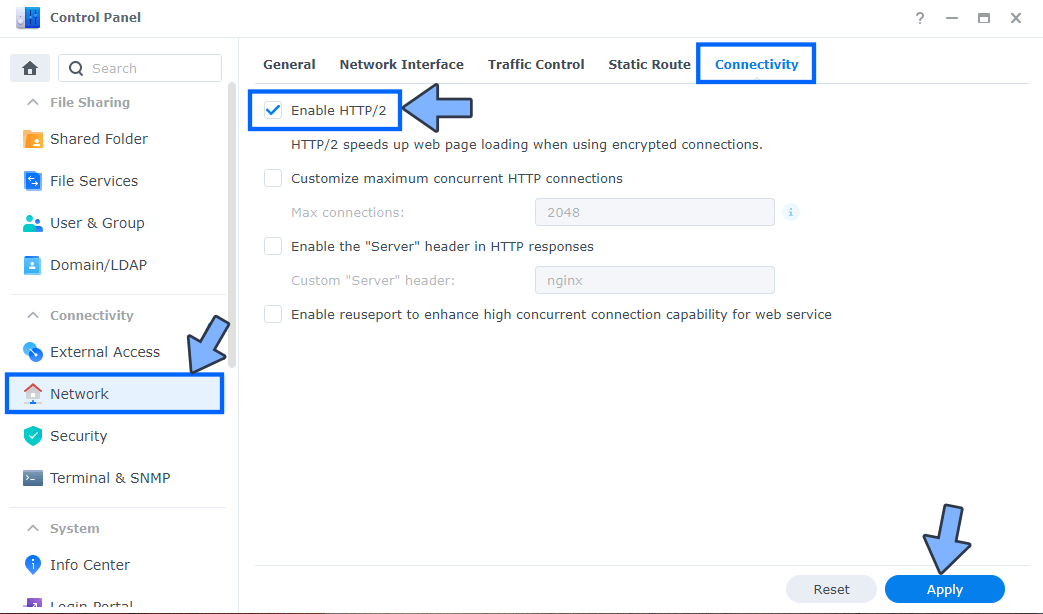
STEP 9
Go to Control Panel / Security / Advanced tab/ Check Enable HTTP Compression then click Apply. Follow the instructions in the image below.
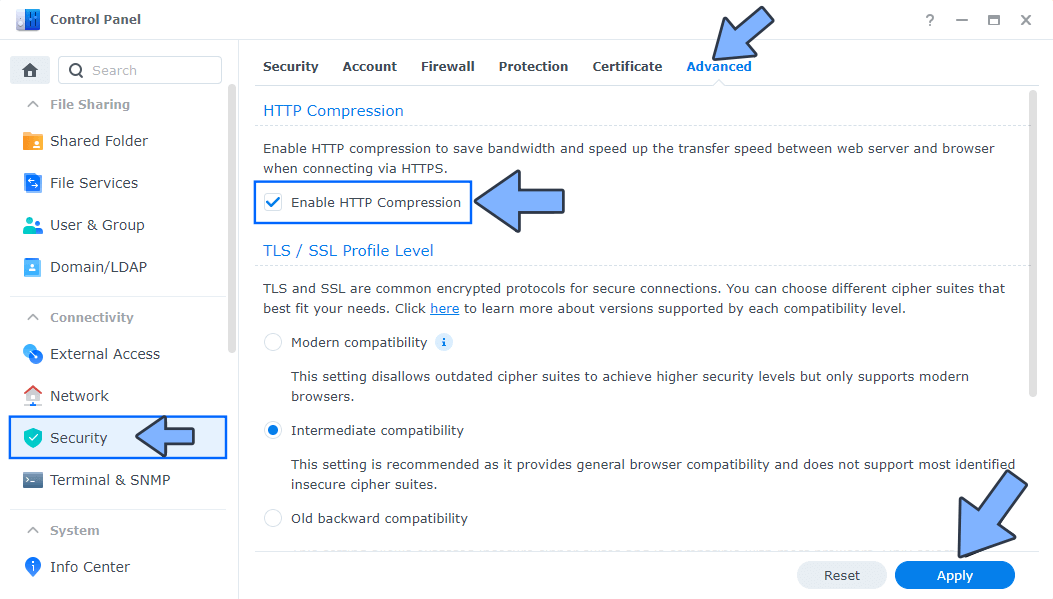
STEP 10
Go to File Station and open the docker folder. Inside the docker folder, create one new folder and name it seafile. Follow the instructions in the image below.
Note: Be careful to enter only lowercase, not uppercase letters.
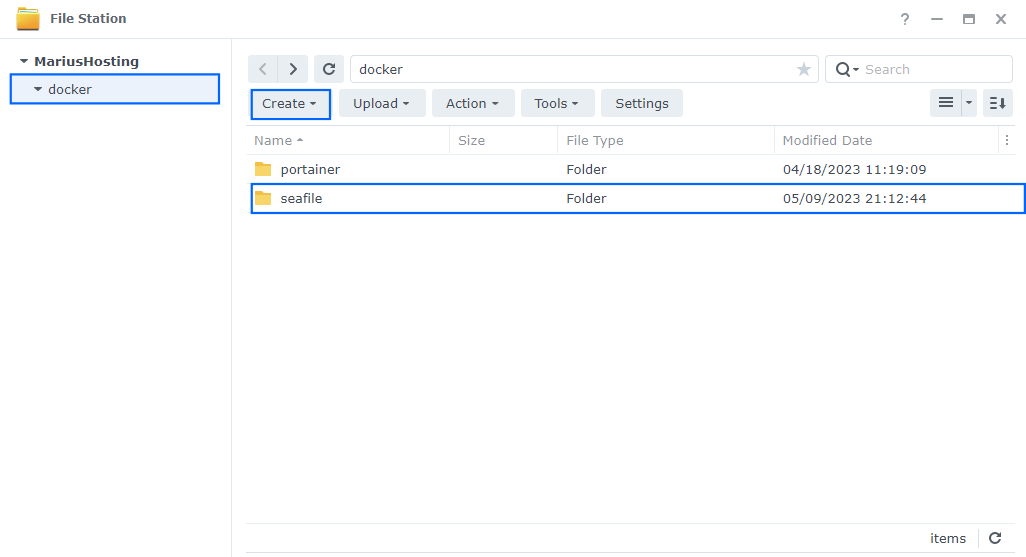
STEP 11
Now create two new folders inside the seafile folder that you created at STEP 10 and name them data and db. Follow the instructions in the image below.
Note: Be careful to enter only lowercase, not uppercase letters.
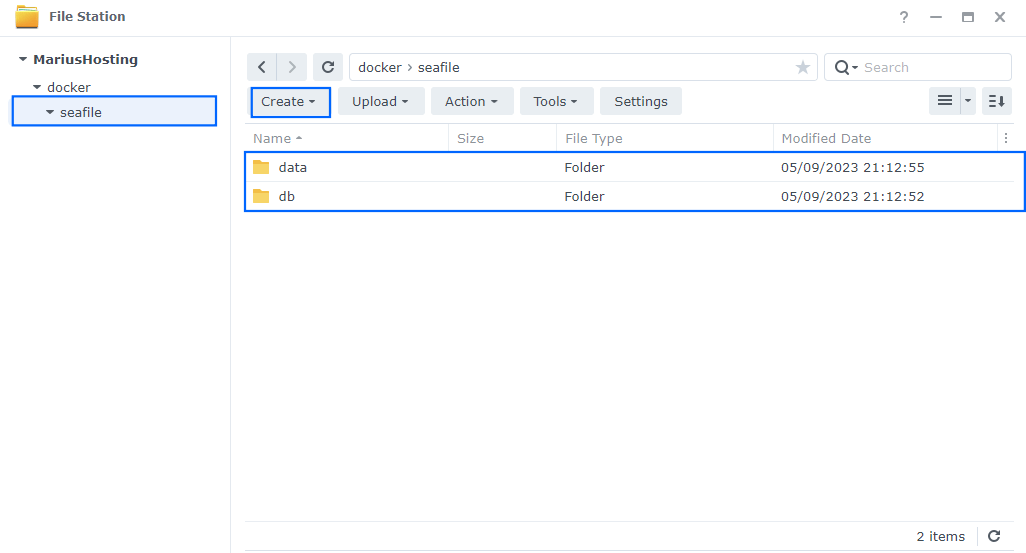
STEP 12
Log into Portainer using your username and password. On the left sidebar in Portainer, click on Stacks then + Add stack. Follow the instructions in the image below.
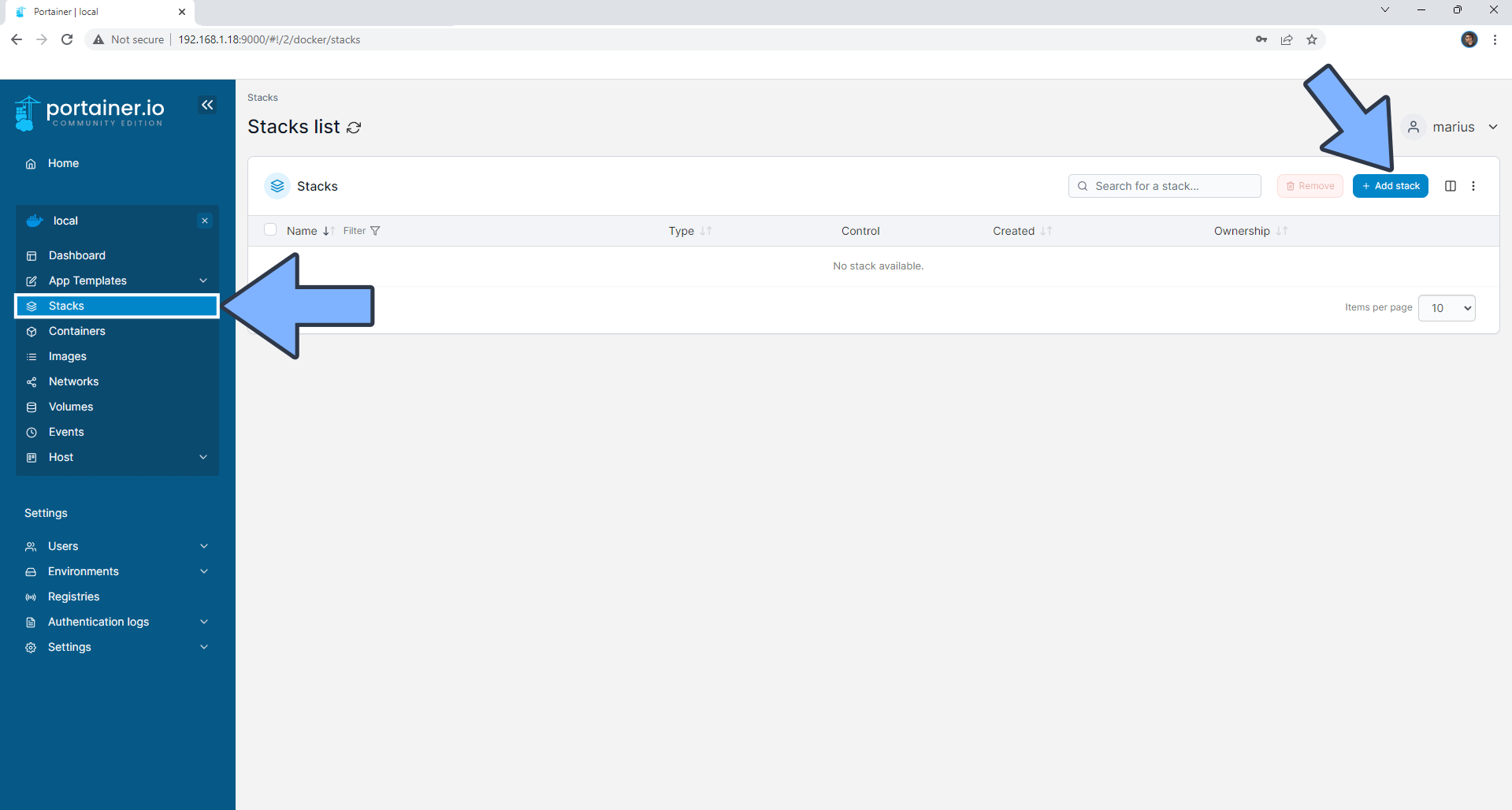
STEP 13
In the Name field type in seafile. Follow the instructions in the image below.
version: "3.9"
services:
db:
image: mariadb:11.3-jammy
container_name: Seafile-DB
hostname: seafile-db
mem_limit: 1g
cpu_shares: 768
security_opt:
- no-new-privileges:true
user: 1026:100
volumes:
- /volume1/docker/seafile/db:/var/lib/mysql:rw
environment:
MYSQL_ROOT_PASSWORD: rootpass
TZ: Europe/Bucharest
restart: on-failure:5
cache:
image: memcached:1.6.22
entrypoint: memcached -m 256
container_name: Seafile-CACHE
hostname: memcached
mem_limit: 512m
cpu_shares: 768
security_opt:
- no-new-privileges:true
read_only: true
user: 1026:100
restart: on-failure:5
seafile:
image: seafileltd/seafile-mc:latest
container_name: Seafile
hostname: seafile
mem_limit: 2g
cpu_shares: 768
security_opt:
- no-new-privileges:true
healthcheck:
test: wget --no-verbose --tries=1 --spider http://localhost
volumes:
- /volume1/docker/seafile/data:/shared:rw
ports:
- 8611:80
environment:
DB_HOST: seafile-db
DB_ROOT_PASSWD: rootpass
TIME_ZONE: Europe/Bucharest
SEAFILE_ADMIN_EMAIL: yourown@email
SEAFILE_ADMIN_PASSWORD: mariushosting
SEAFILE_SERVER_LETSENCRYPT: false
SEAFILE_SERVER_HOSTNAME: seafile.yourname.synology.me
FORCE_HTTPS_IN_CONF: true
restart: on-failure:5
depends_on:
db:
condition: service_started
cache:
condition: service_started
Note: Before you paste the code above in the Web editor area below, change the value numbers for user with your own UID and GID values. (Follow my step by step guide on how to do this.) 1026 is my personal UID value and 100 is my personal GID value. You have to type in your own values.
Note: Before you paste the code above in the Web editor area below, change the value for TZ. (Select your current Time Zone from this list.)
Note: Before you paste the code above in the Web editor area below, change the value for SEAFILE_ADMIN_EMAIL. You have to type in your own email address that you will need later at STEP 27.
Note: Before you paste the code above in the Web editor area below, change the value for SEAFILE_ADMIN_PASSWORD. mariushosting is an example for a password. You have to type in your own password that you will need later at STEP 27.
Note: Before you paste the code above in the Web editor area below, change the value for SEAFILE_SERVER_HOSTNAME and type in your own synology.me DDNS without https:// at the beginning that you have previously created at STEP 6.
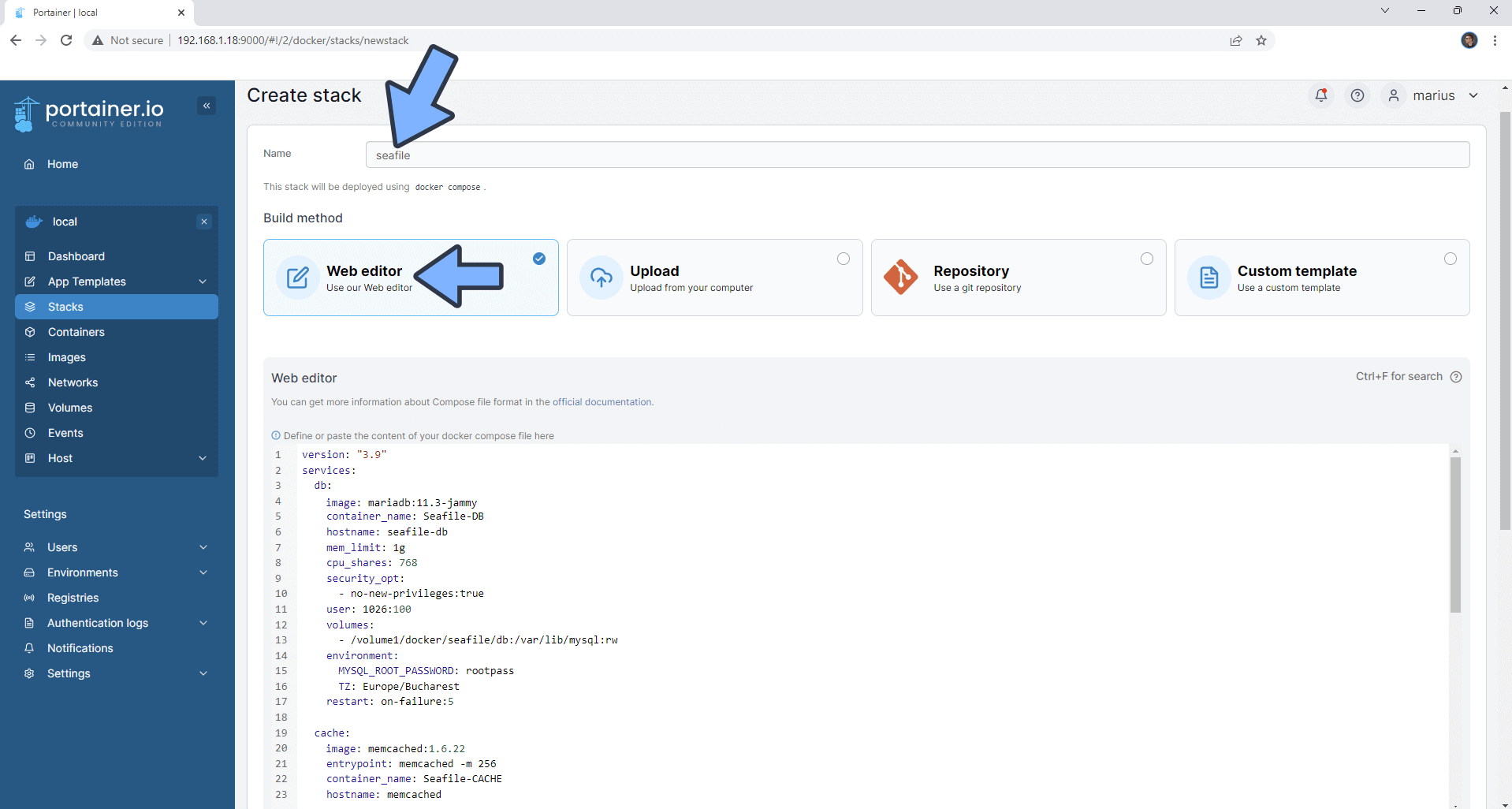
STEP 14
Scroll down on the page until you see a button named Deploy the stack. Click on it. Follow the instructions in the image below. The installation process can take up to a few minutes. It will depend on your Internet speed connection.
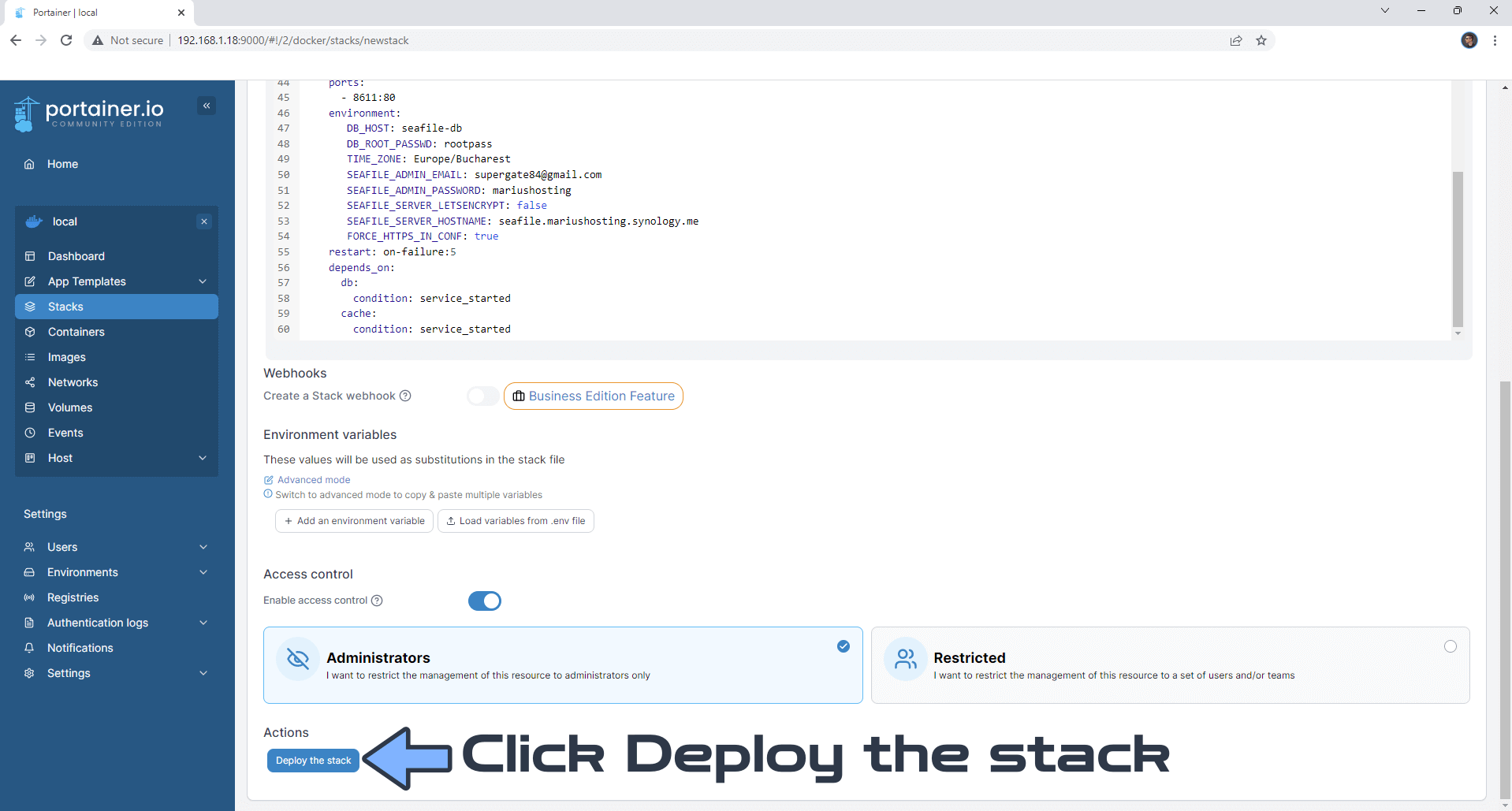
STEP 15
If everything goes right, you will see the following message at the top right of your screen: “Success Stack successfully deployed“.
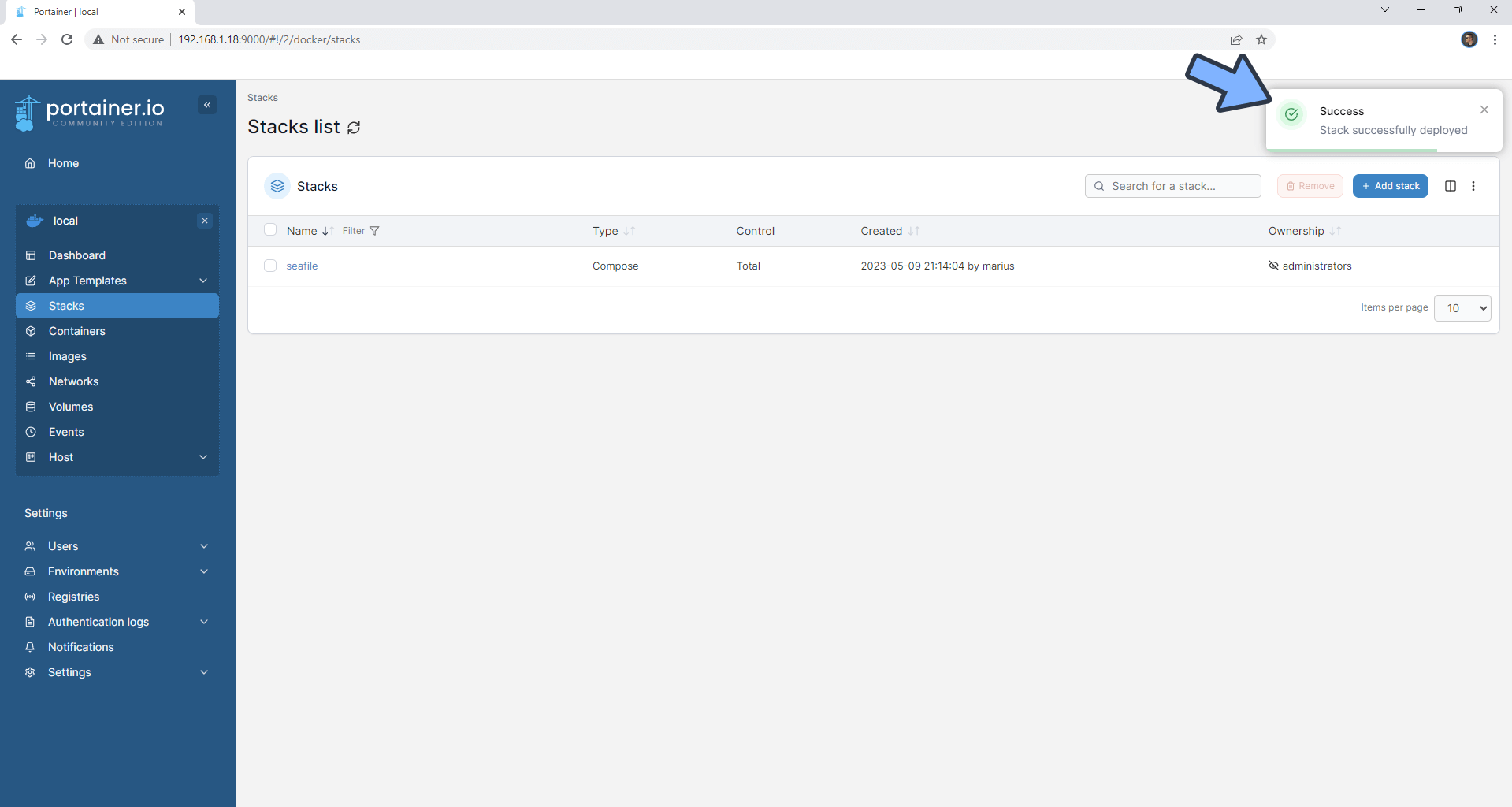
STEP 16
⚠️Warning: Wait 5 minutes now before touching anything.
STEP 17
Go back to STEP 1 or you will deal with karma 🙂
STEP 18
Install Text Editor via Synology “Package Center”. If you already have Text Editor installed on your Synology NAS, skip this STEP.
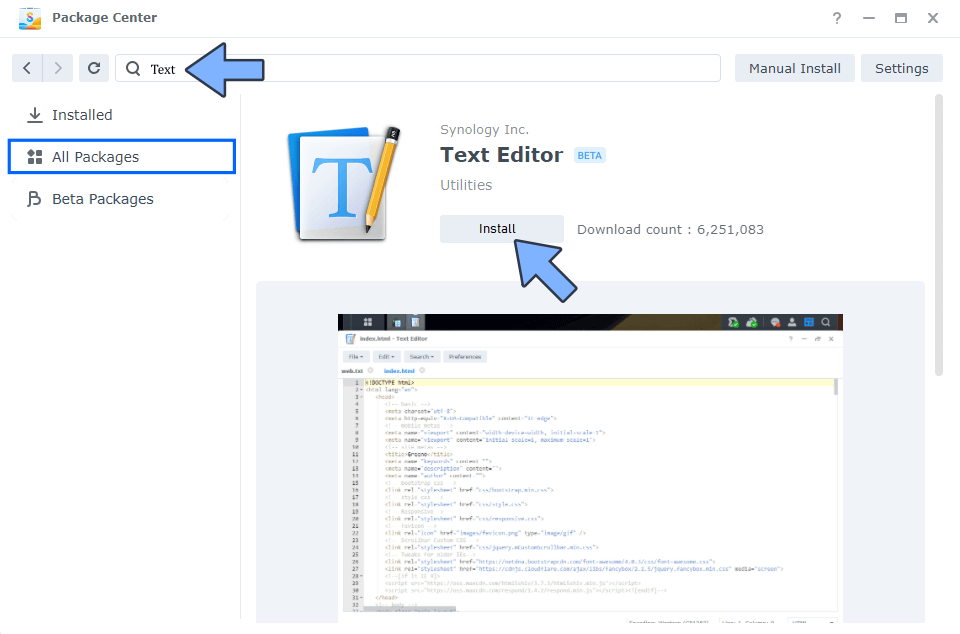
STEP 19
Right click on the seafile folder that you have previously created at STEP 10 then click Properties. Follow the instructions in the image below.
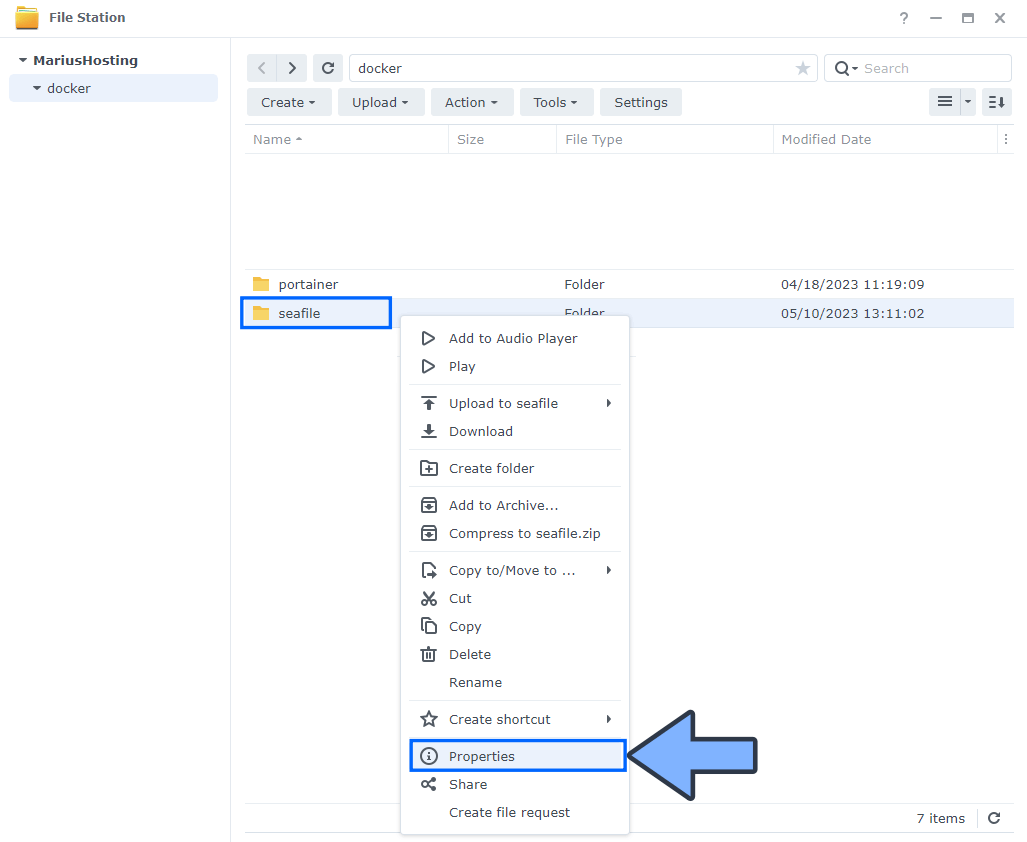
STEP 20
Go to the Permission tab then click Advanced options. From the drop-down menu choose “Make inherited permissions explicit“. Follow the instructions in the image below.
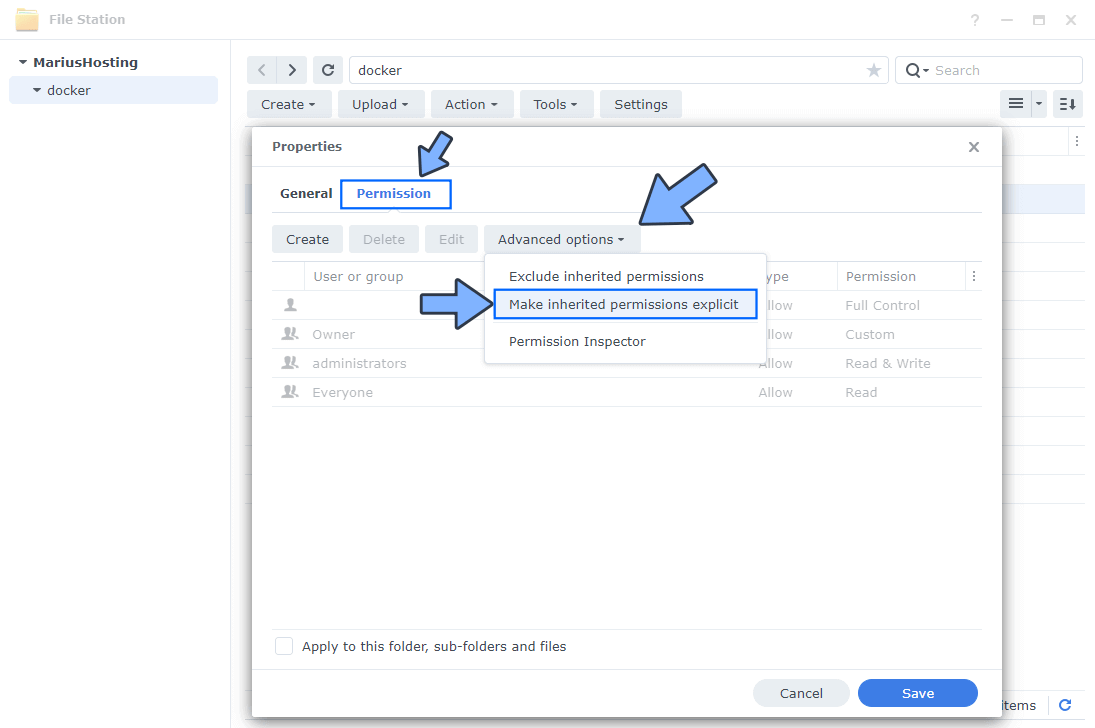
STEP 21
Select Everyone then click the Edit tab. Follow the instructions in the image below.
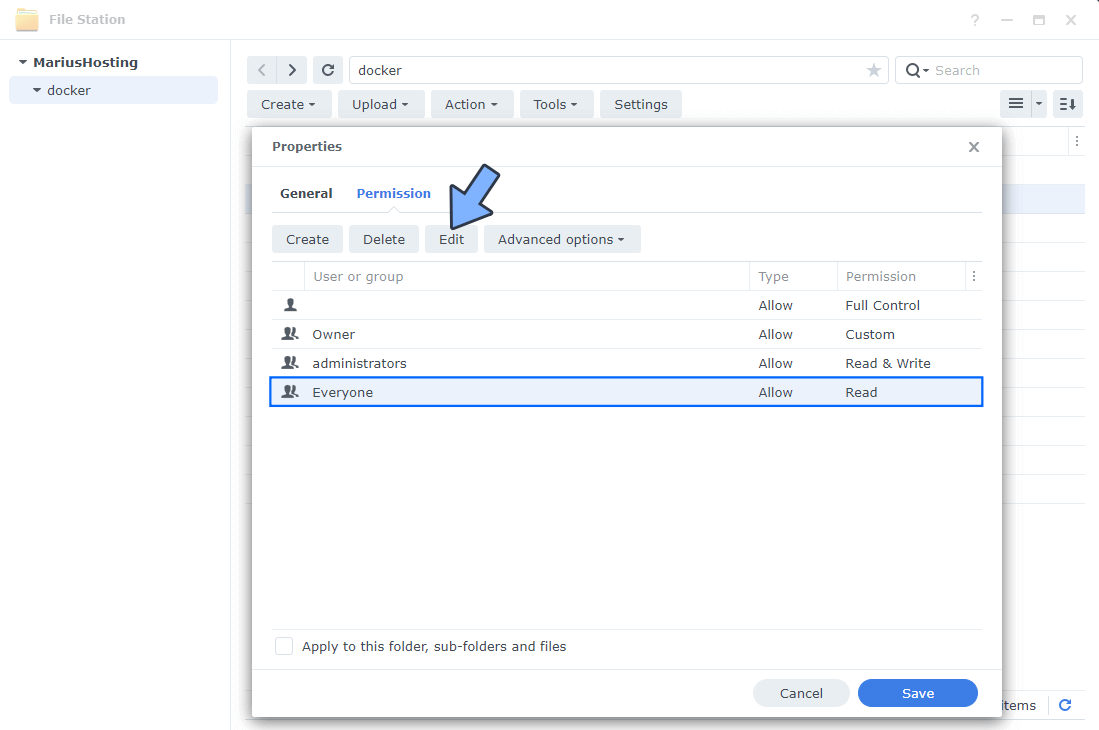
STEP 22
Check all Read and Write Permissions. Click Done. Follow the instructions in the image below.
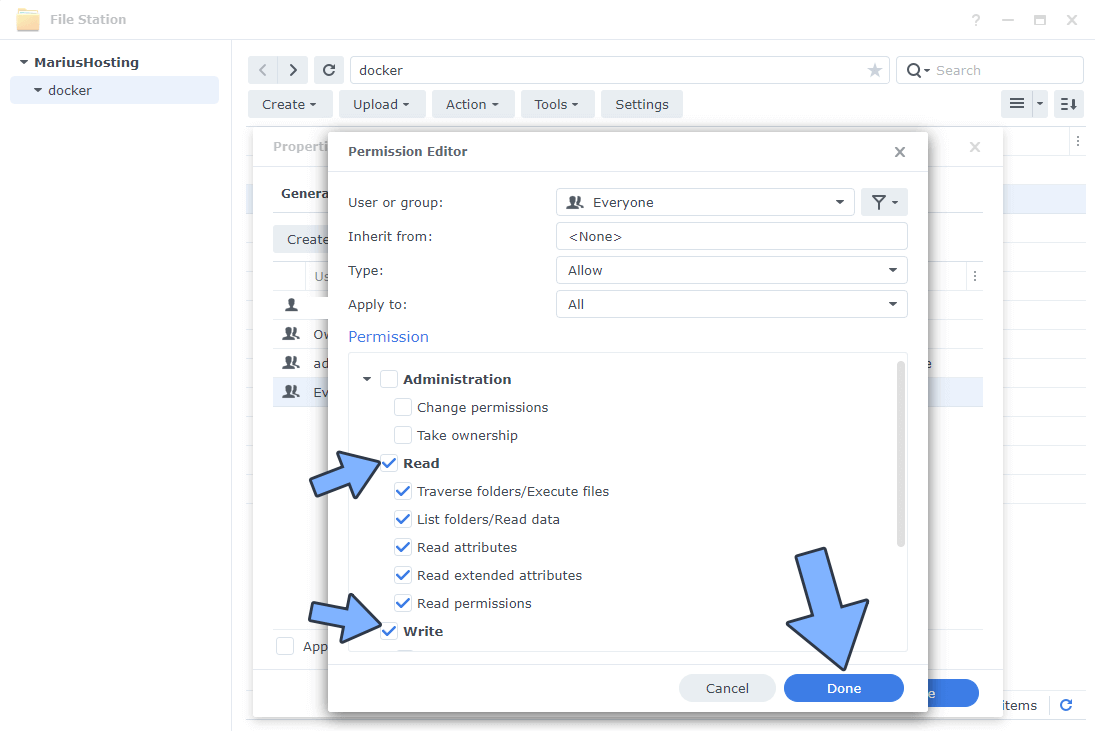
STEP 23
After you click Done on STEP 22, check “Apply to this folder, sub-folders and files“. Click Save. Follow the instructions in the image below.
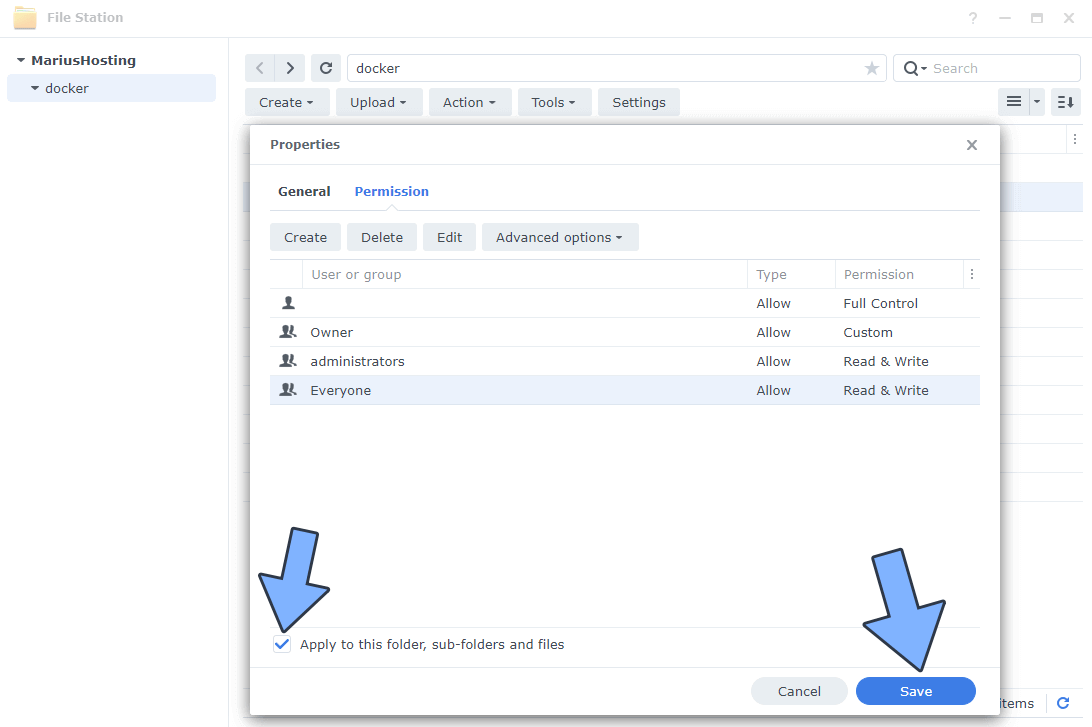
STEP 24
Go to the /volume1/seafile/data/seafile/conf folder, then double click on the seahub_settings.py file. Copy then paste the code below at the end of the seahub_settings.py file, then add your own synology.me DDNS with https at the beginning that you have previously created at STEP 6. After you have added the code below, save the settings by clicking X. Follow the instructions in the image below.
CSRF_TRUSTED_ORIGINS = ["https://seafile.yourname.synology.me"]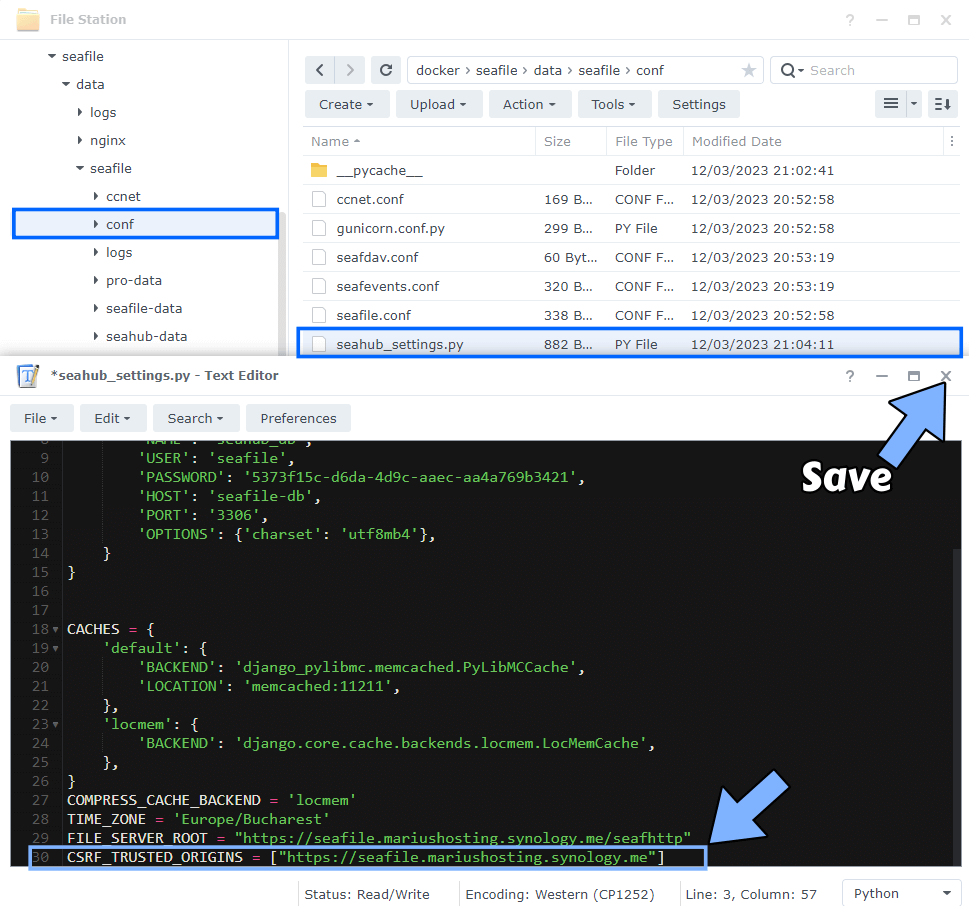
STEP 25
On the left sidebar in Portainer, click Containers. Identify your Seafile instances, select them then click Restart. Follow the instructions in the image below.
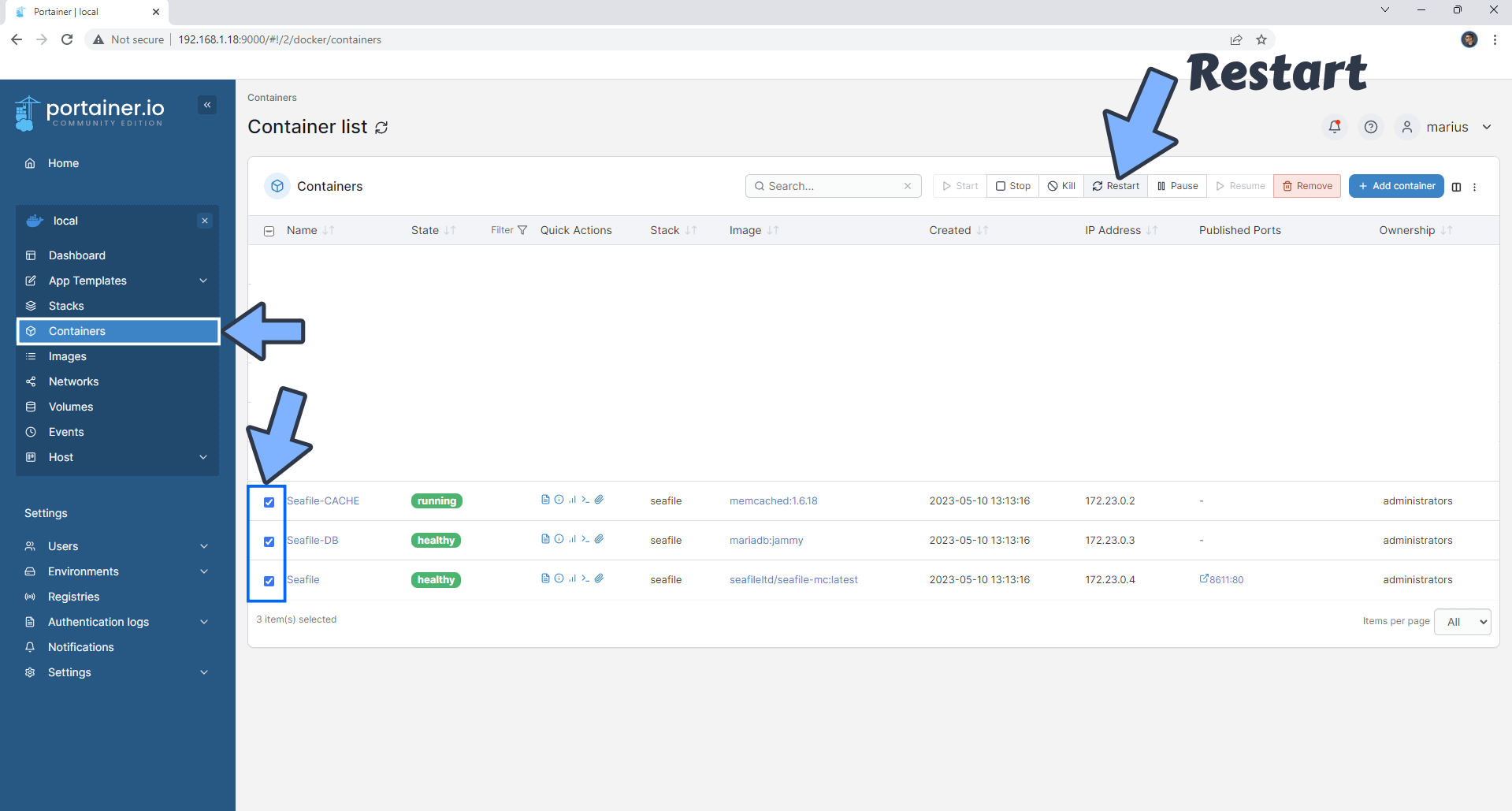
STEP 26
Go back to STEP 1 or you will deal with karma
STEP 27
Please wait approximately 2 minutes for the installation to be completed or you will get a blank page if you try to connect too soon. Now open your browser and type in your HTTPS/SSL certificate like this https://seafile.yourname.synology.me that you have previously created at STEP 6. In my case it’s https://seafile.mariushosting.synology.me If everything goes right, you will see the Seafile log in page. Type in your own Email address and Password that you have previously added at STEP 13 then click Log in. Follow the instructions in the image below.
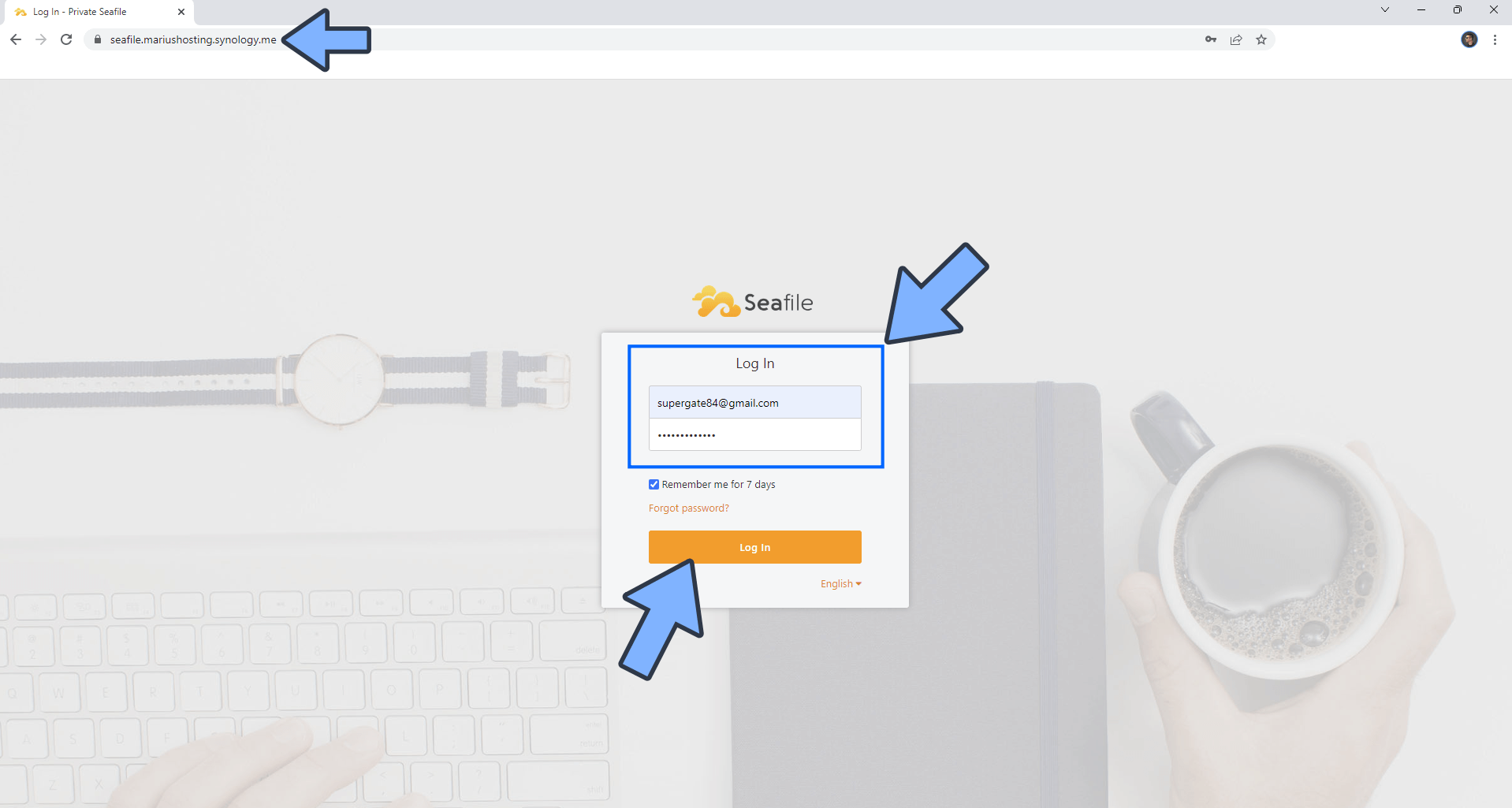
STEP 28
Your Seafile dashboard will look like this.
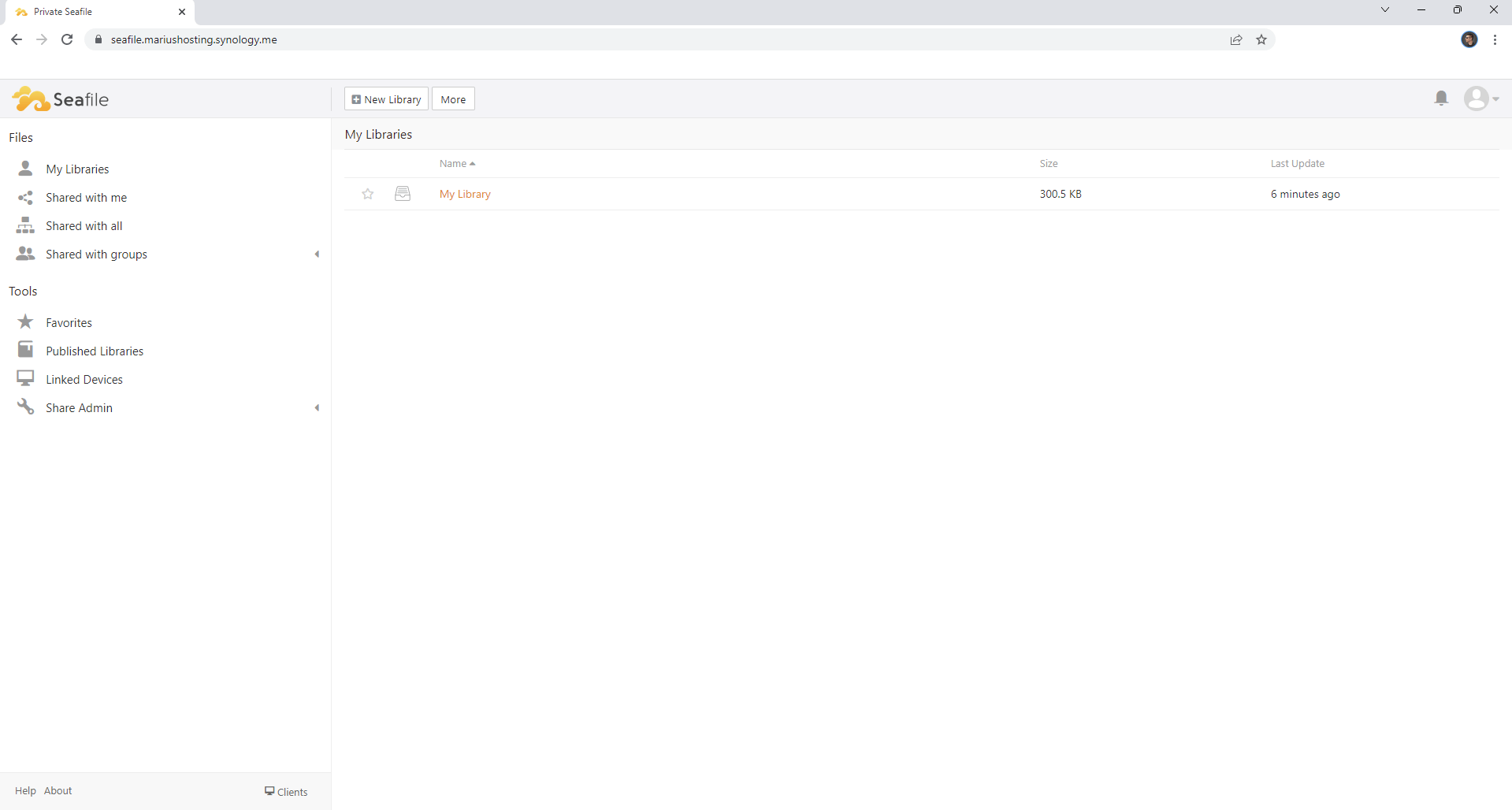
STEP 29
At the top right of the page click on the user icon then System Admin. On the left sidebar click Settings. In the SERVICE_URL field and FILE_SERVER_ROOT field type in https instead of http before your DDNS name, then confirm the modification by clicking Submit. Follow the instructions in the image below.
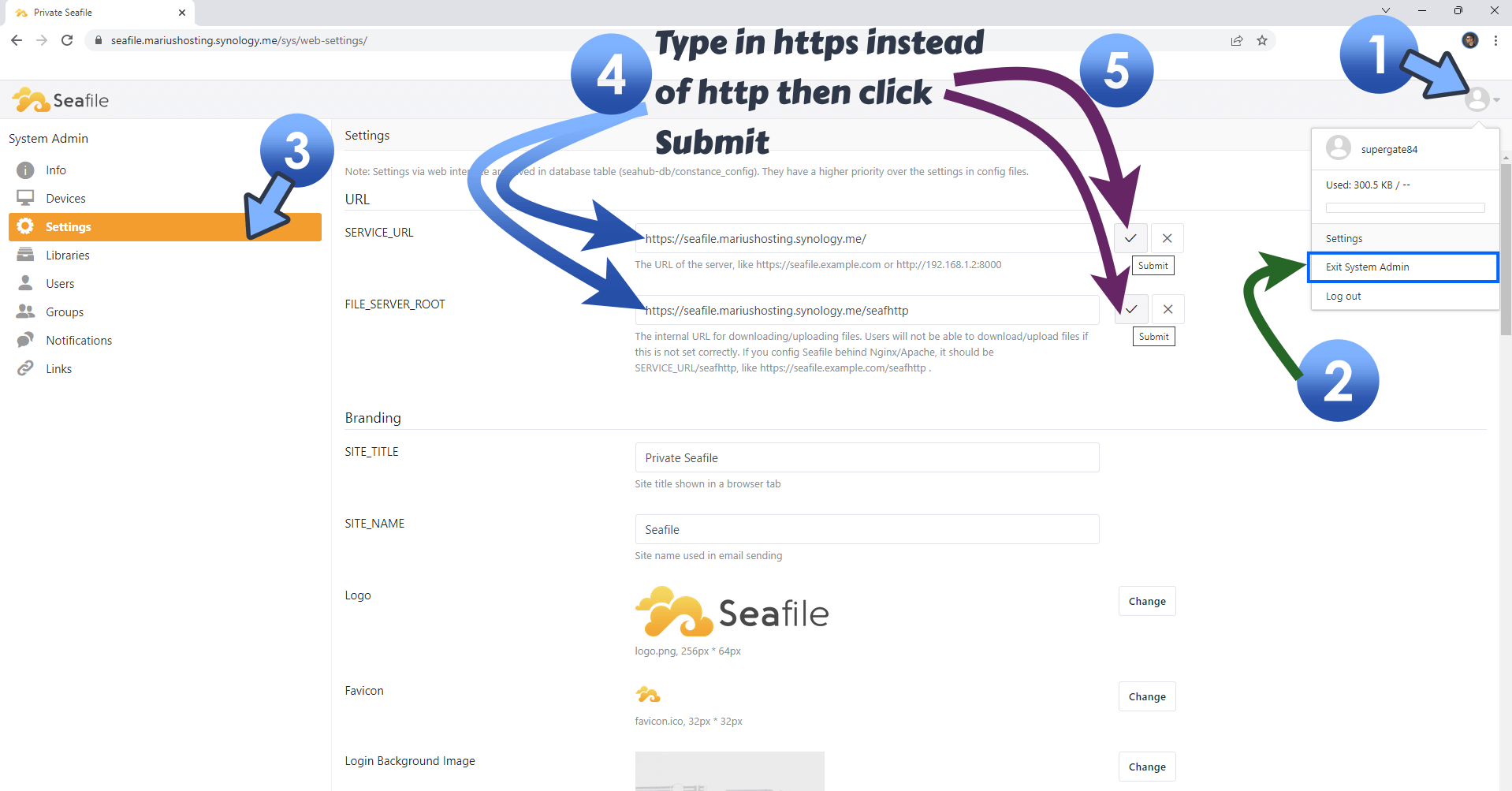
STEP 30
Set Up Email Notifications on Seafile.
STEP 31
You can also download the Seafile application for Android and Apple devices.
Enjoy Seafile!
Note: Can I run Docker on my Synology NAS? See the supported models.
Note: How to Back Up Docker Containers on your Synology NAS.
Note: Find out how to update the Seafile container with the latest image.
Note: How to Free Disk Space on Your NAS if You Run Docker.
Note: How to Schedule Start & Stop For Docker Containers.
Note: How to Activate Email Notifications.
Note: How to Add Access Control Profile on Your NAS.
Note: How to Change Docker Containers Restart Policy.
Note: How to Use Docker Containers With VPN.
Note: Convert Docker Run Into Docker Compose.
Note: How to Clean Docker.
Note: How to Clean Docker Automatically.
Note: Best Practices When Using Docker and DDNS.
Note: Some Docker Containers Need WebSocket.
Note: Find out the Best NAS Models For Docker.
Note: Activate Gmail SMTP For Docker Containers.
This post was updated on Tuesday / June 11th, 2024 at 10:25 AM
